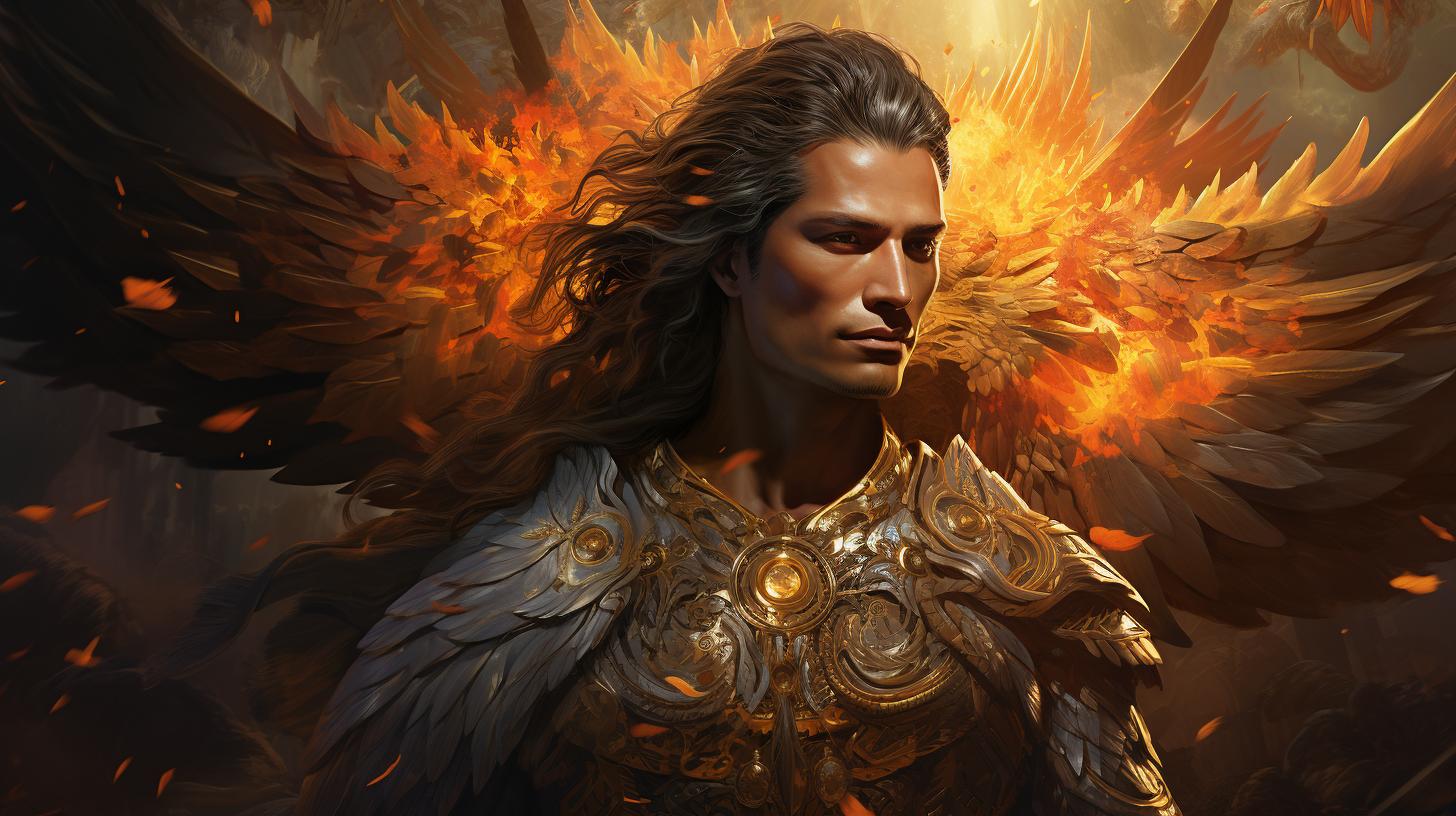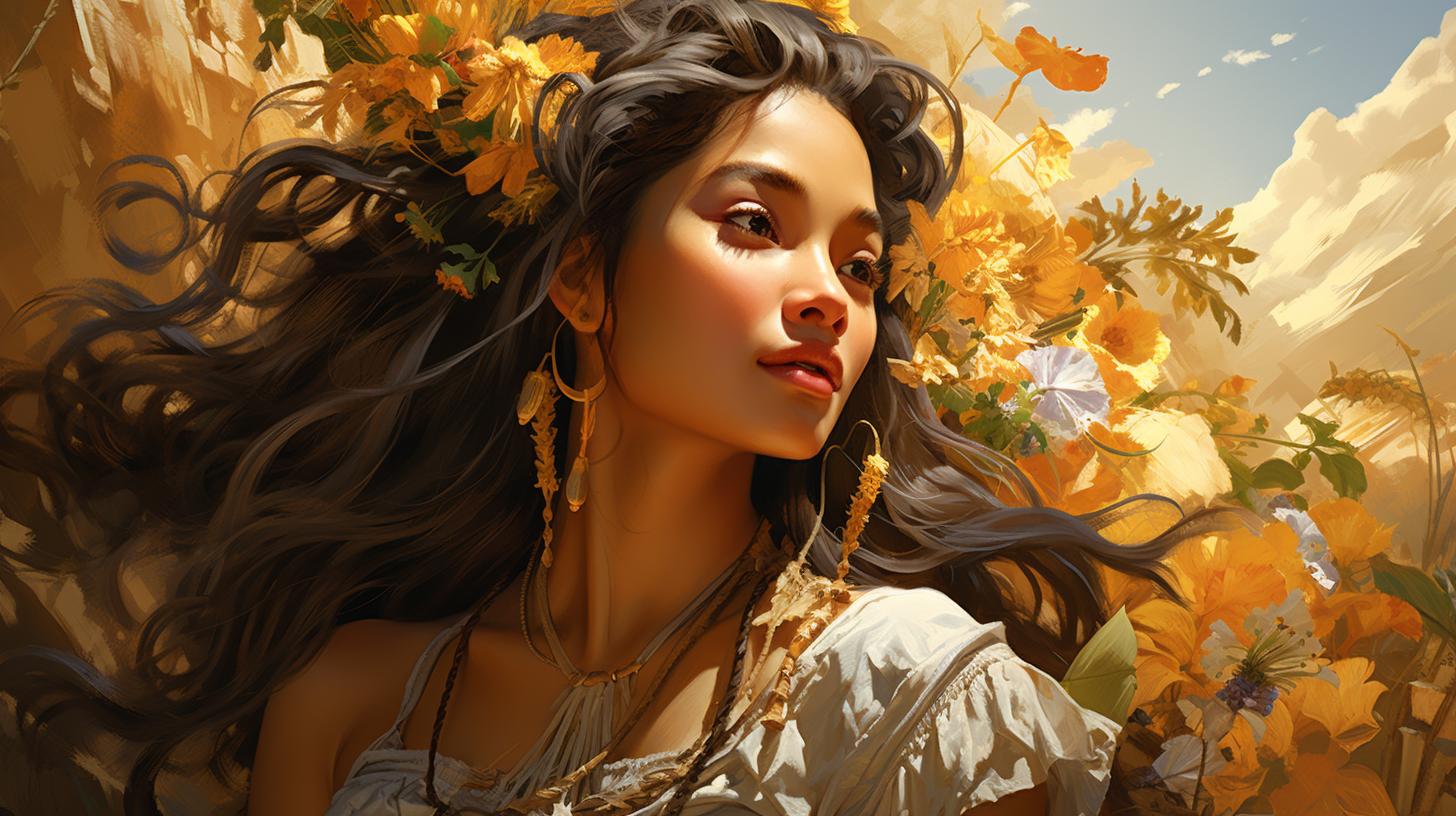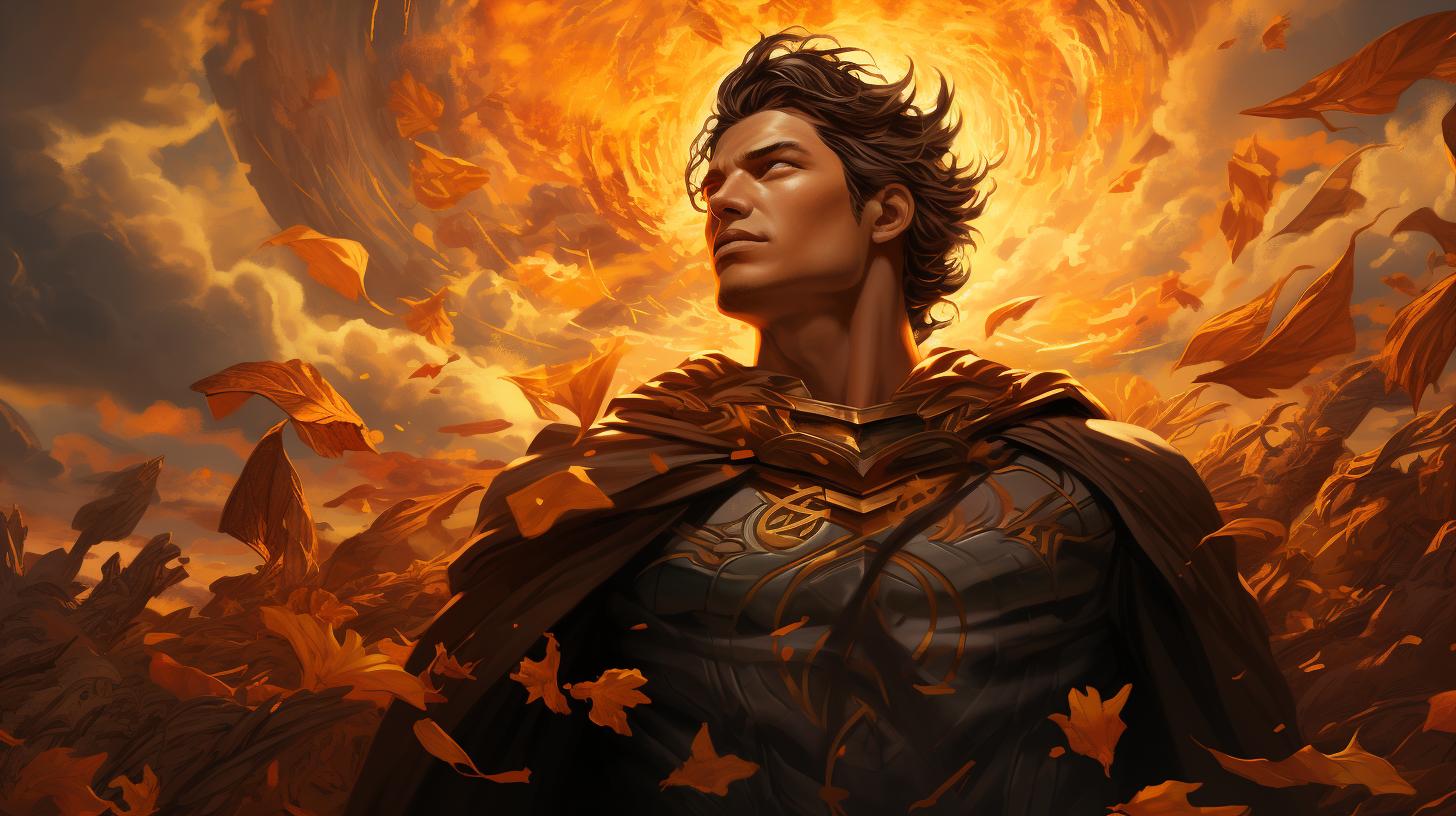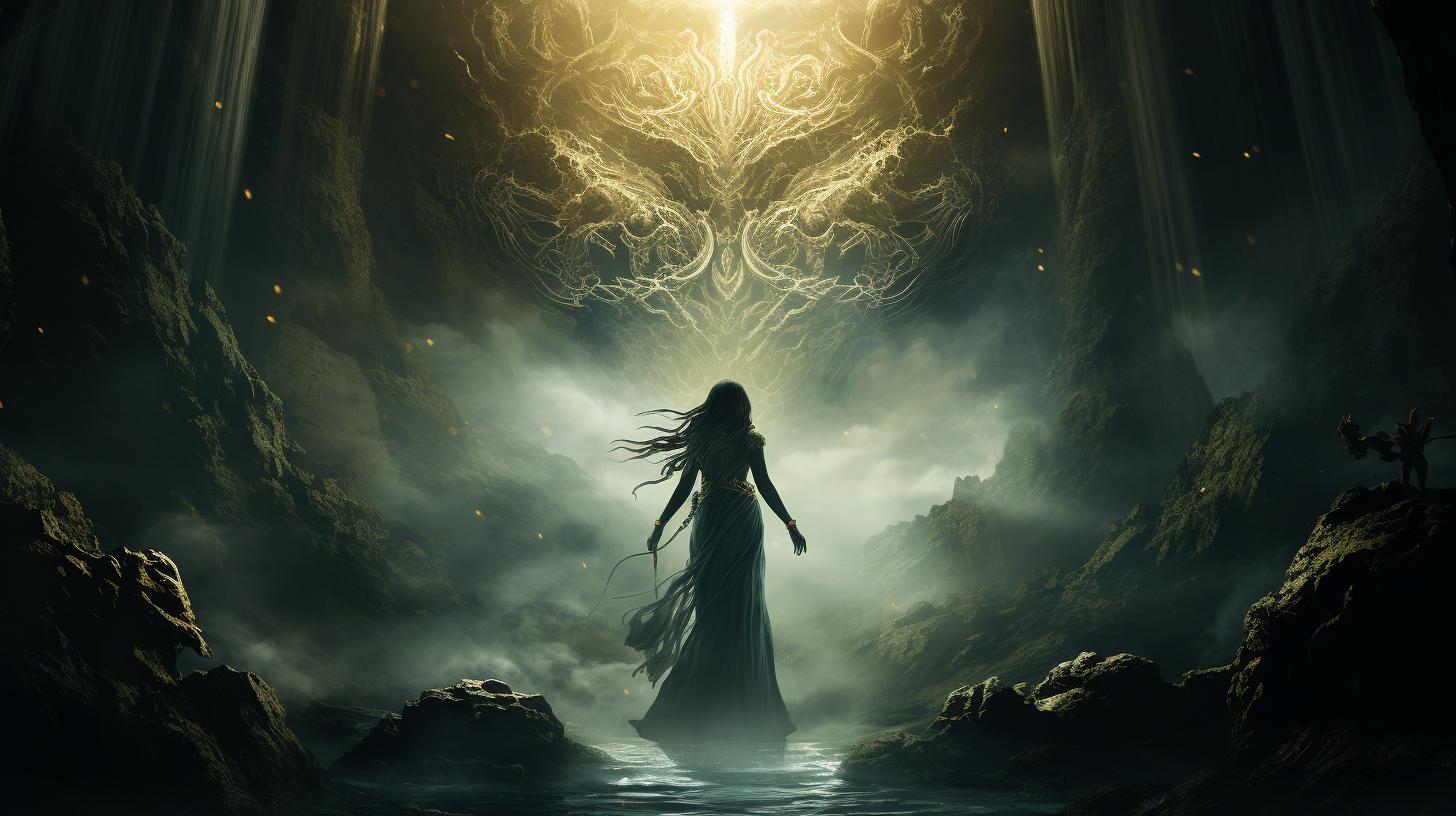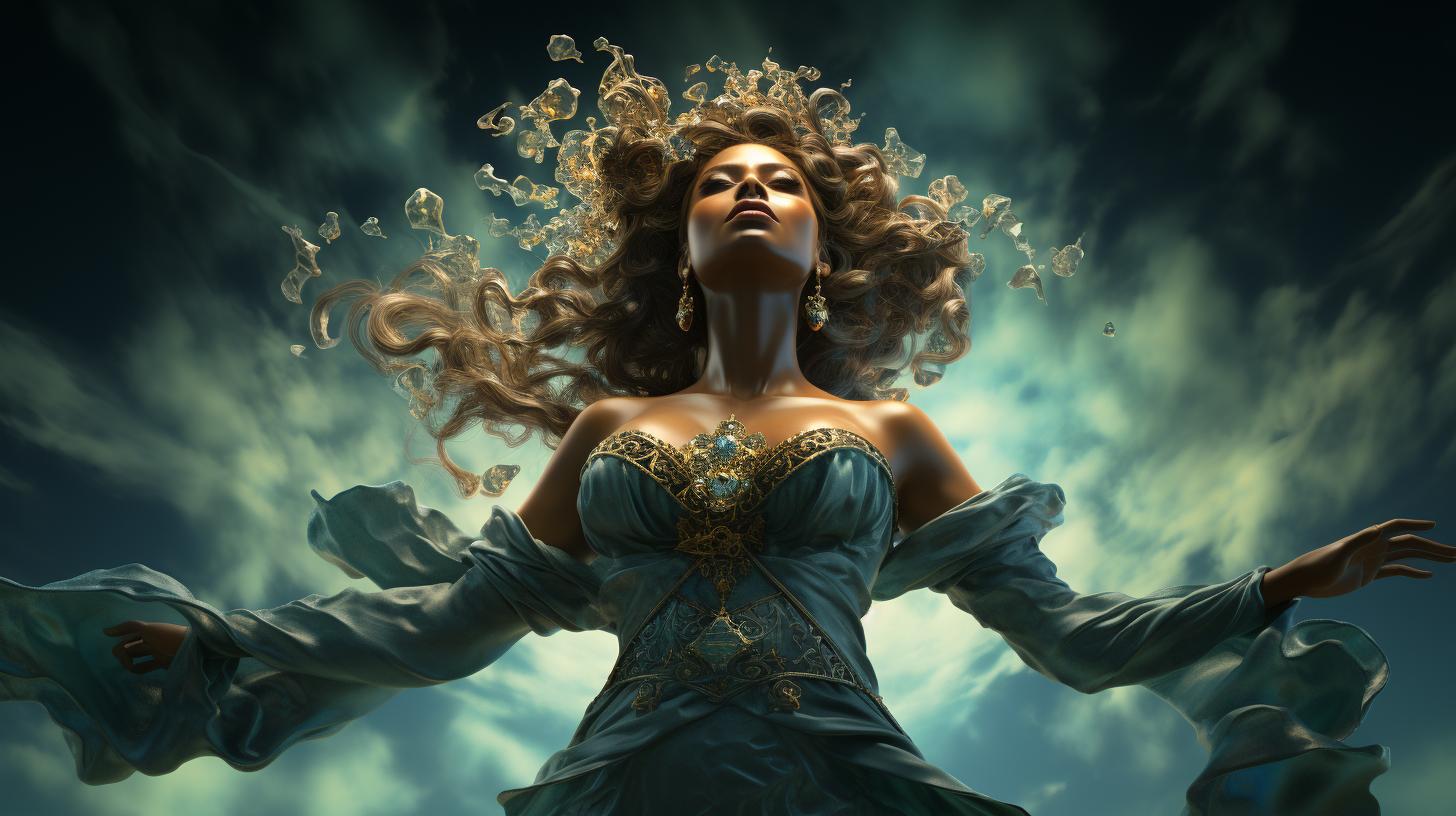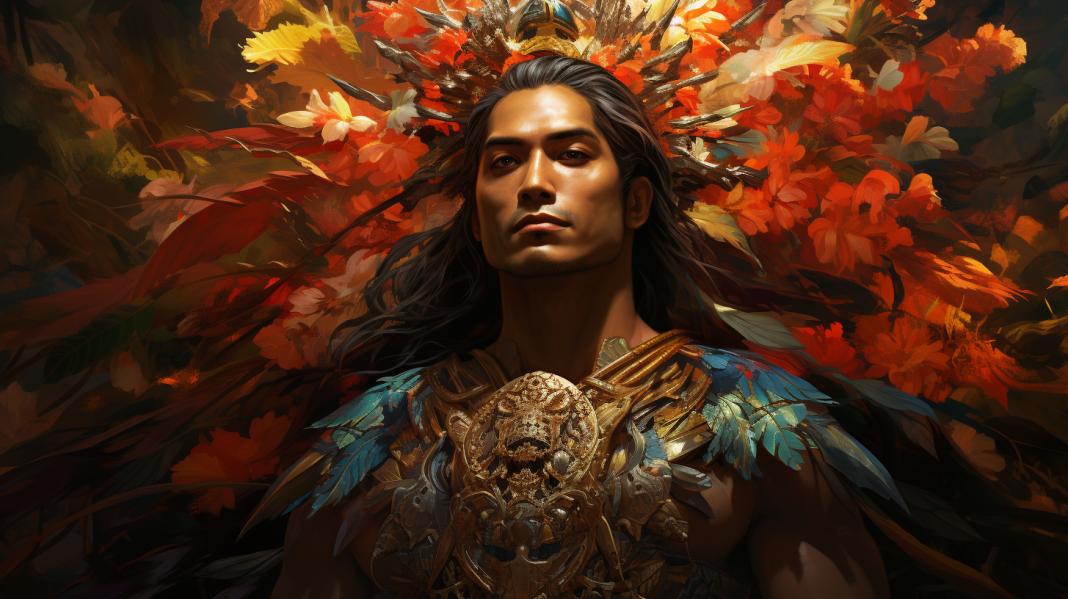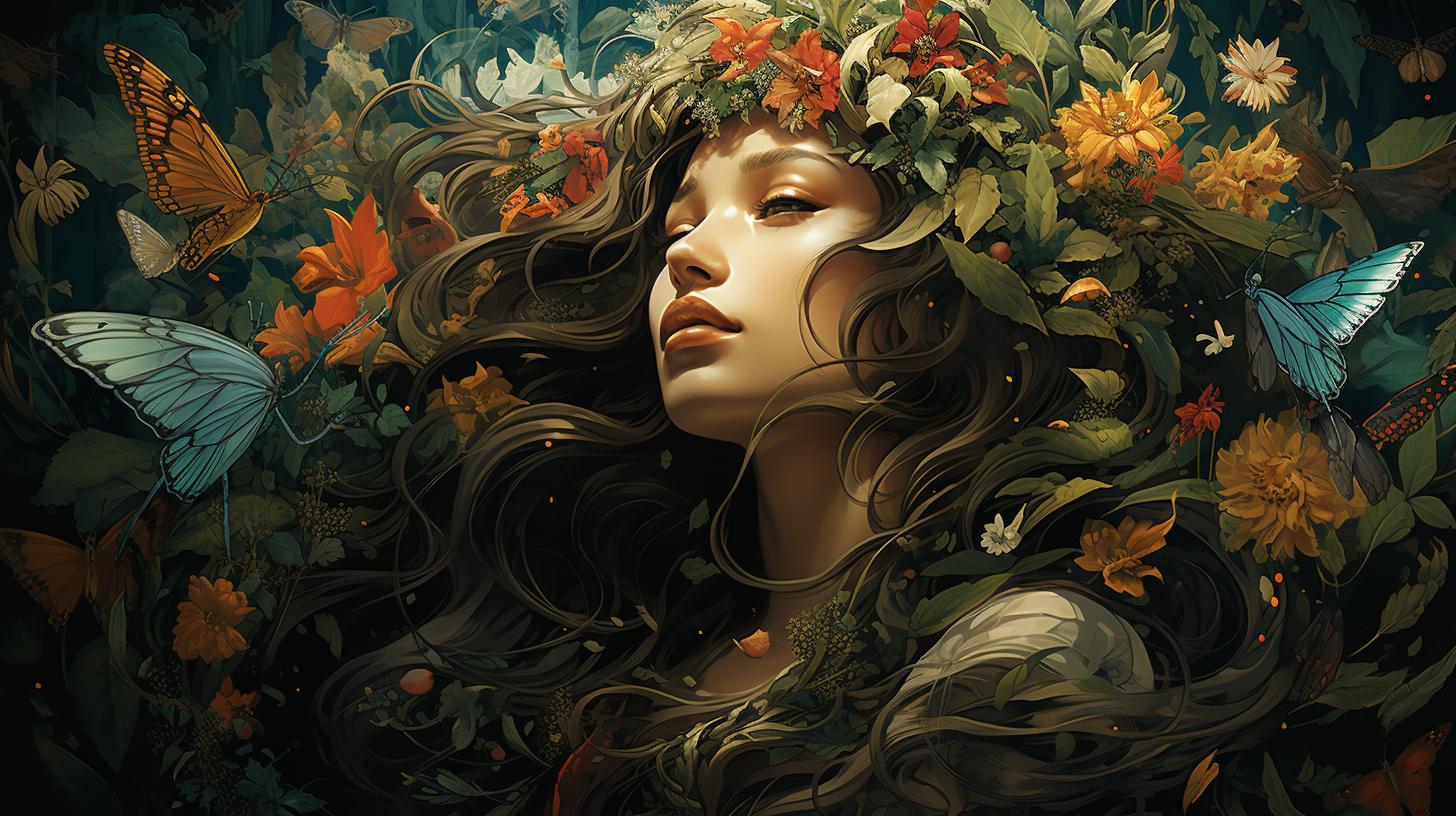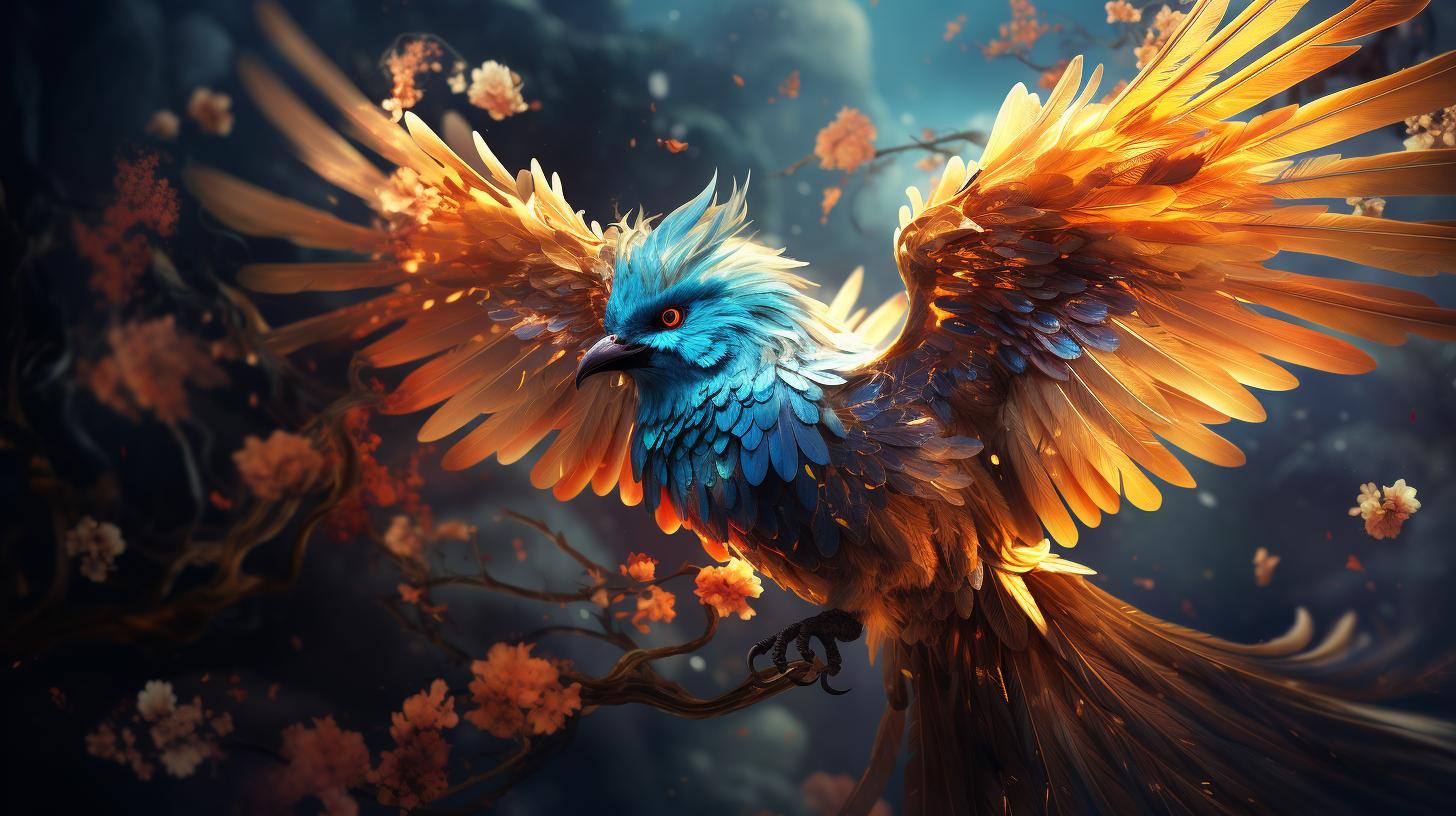Bathala Philippine Mythology: Unveiling the Ancient Gods and Legends
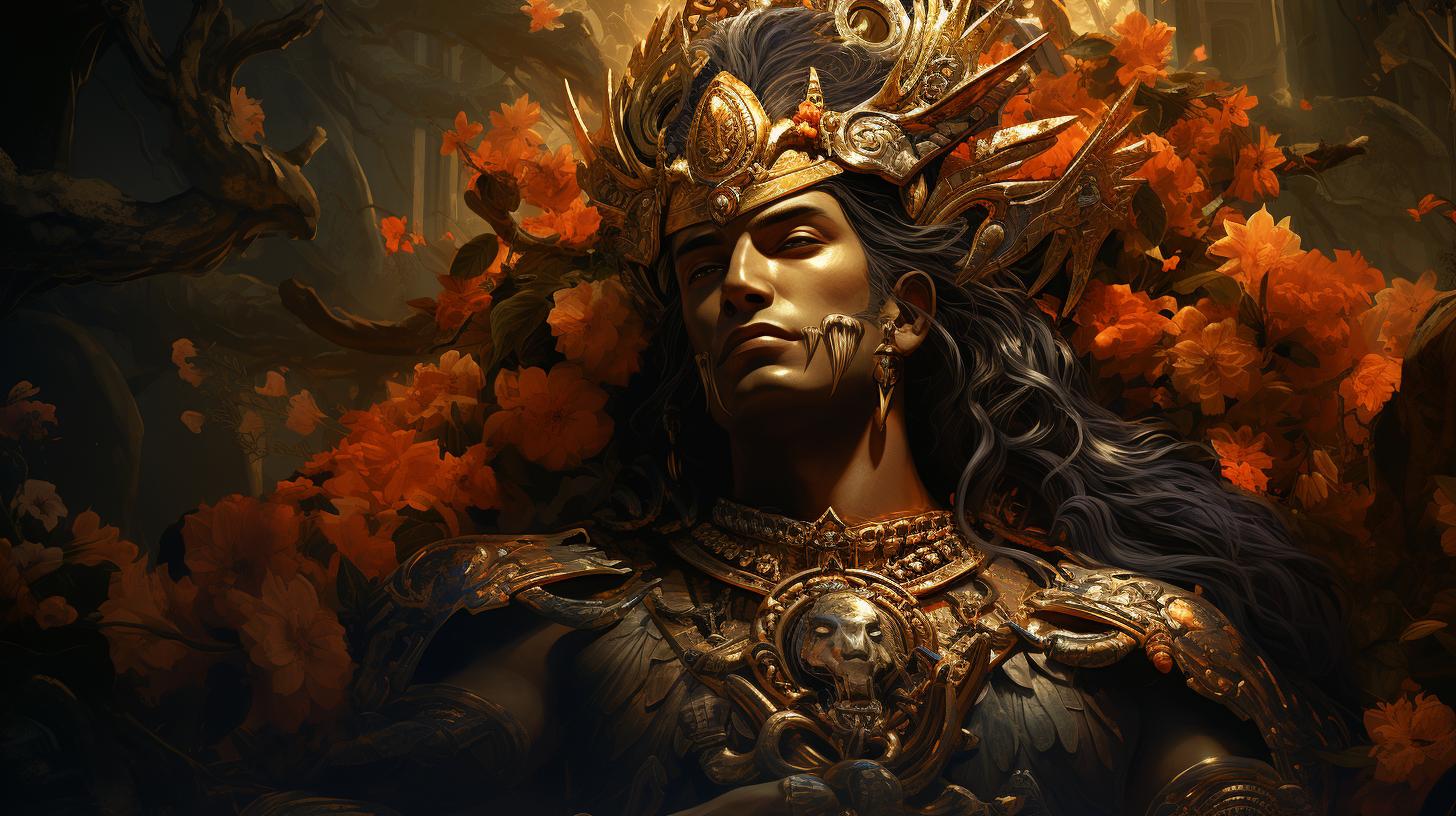
Bathala Philippine Mythology is a captivating aspect of Filipino folklore and belief system. As the Supreme God in ancient Tagalog religion, Bathala held the role of creator and ruler of the universe.
This article provides insights into Bathala’s significance, mythological accounts of creation, and the influence of Spanish colonization on Bathala’s representation. It also explores the revival of traditional worship and Bathala’s continuing impact on modern Filipino culture.
Discover the fascinating world of Bathala, the central deity in Philippine mythology.
Background of Bathala Philippine Mythology
The rich tapestry of Bathala Philippine Mythology unveils a captivating world of ancient beliefs and enigmatic deities. Dive deep into the ancient Tagalog culture and discover their fascinating beliefs and pantheon of gods.
The Beliefs and Deities of the Ancient Tagalogs
The ancient Tagalogs held profound beliefs, attributing supernatural powers to various deities that governed different aspects of life. They worshipped a diverse array of gods and spirits, each playing a crucial role in their cosmology.
These deities, known as anitos, served as intermediaries between humans and the divine. They were worshipped in sacred places, such as burial grounds or natural formations, and were believed to provide protection, guidance, and blessings to their devotees.
Bathala as the Supreme God
Among the pantheon of deities, Bathala stood as the paramount figure in Tagalog mythology. Revered as the Supreme God, Bathala was regarded as the transcendent creator and ruler of the universe.
Bathala held immense power, shaping the natural world and controlling the forces of nature. The ancient Tagalogs believed that Bathala governed all aspects of life, including birth, death, and harvest, influencing the fate and fortune of individuals and communities.
Furthermore, Bathala was associated with personal guardians, ill-omened birds, comets, and other celestial bodies, believed to provide omens and foresight into future events.
As the centuries unfolded, Spanish missionaries arrived in the Philippines, resulting in the assimilation of Bathala into Christian beliefs. This syncretism led to Bathala being identified with the Christian God, Diyos.
However, in recent times, there has been a resurgence of the term Bathala, reclaiming its indigenous significance and reestablishing its position in Tagalog mythology.
- To summarize:
- The ancient Tagalogs worshipped a diverse pantheon of deities known as anitos.
- Bathala played a prominent role as the Supreme God in Tagalog mythology.
- Bathala was associated with celestial bodies and served as an omen-giver.
- With Spanish colonization, Bathala became associated with the Christian God, Diyos.
- In recent years, there has been a revival of the term Bathala, reclaiming its indigenous significance.
Bathala: The Filipino Creator Deity
The mythology of Bathala, the Filipino Creator Deity, holds immense significance in Filipino culture and beliefs.
This section delves into the fascinating mythological accounts of creation attributed to Bathala, as well as his role in Tagalog beliefs and traditions.
Mythological Accounts of Creation
Bathala’s role as the Creator is vividly portrayed in various mythological accounts. One popular tale describes Bathala as the eternal god, portrayed either as an old deity with a long white beard or as a young god during the moment of creation.
Another depiction presents Bathala as a solitary giant who resided on Earth before crafting all living creatures.
These myths highlight Bathala’s immense power and creative abilities, emphasizing his role as the ultimate source of life and existence in the Filipino pantheon.
They contribute to the awe-inspiring image of Bathala as a divine entity responsible for shaping the world and all that inhabits it.
Bathala’s Role in Tagalog Beliefs
Bathala held a central role in the religious beliefs of the ancient Tagalogs. Revered as the Supreme God, Bathala was seen as the transcendent ruler and creator of the universe. He was not only associated with personal guardian spirits, ill-omened birds, comets, and other celestial bodies, but also with the ability to predict future events.
From his heavenly abode known as Kawalhatian, Bathala watched over humanity, finding joy in those who followed his moral teachings and rules. However, he also displayed severity towards those who disobeyed his commandments, punishing them with thunder and lightning.
Throughout history, Bathala’s significance has evolved and intertwined with Christianity due to Spanish colonization. Despite attempts to replace his name with Panginoon (Lord) and Diyos (God), recent years have witnessed a resurgence in the use of the term Bathala, reflecting a revival of indigenous Tagalog deities and practices.
Today, Bathala retains his importance in Filipino culture and folklore, leading a silent revolution in the realm of Philippine mythology. As the Filipino Creator Deity, Bathala’s legacy shines through, shaping Filipino identity and preserving ancient mythological traditions.
Bathala vs Zeus: a Mythological Comparison
Similarities and Differences in Attributes and Stories
When comparing Bathala, the supreme deity of Philippine mythology, with Zeus, the king of the gods in Greek mythology, there are both striking similarities and notable differences in their attributes and stories.
Similarities:
- Both Bathala and Zeus hold positions of supreme rulership in their respective mythologies.
- They are both associated with the creation and governance of the universe.
- Both deities possess great power and are believed to control natural phenomena like thunder and lightning.
- They are often depicted as father figures, with Bathala as the father of all and Zeus as the father of gods and humans.
- Both gods had consorts, with Bathala having a divine partner and Zeus being famously married to Hera.
Differences:
- Zeus is part of the Greek pantheon, while Bathala is specific to Philippine mythology.
- Bathala is referred to as the transcendent and eternal God, whereas Zeus is part of a larger pantheon with a hierarchical structure.
- The stories and legends associated with Bathala focus on the indigenous Tagalog culture, while Zeus embodies the ideals and values of ancient Greek civilization.
- Zeus is frequently portrayed as a charismatic and somewhat capricious deity, while Bathala is depicted as a just and moral ruler.
Cultural and Historical Influences
The comparison between Bathala and Zeus not only sheds light on the similarities and differences in their mythological attributes and stories but also reveals the cultural and historical influences that shaped these deities.
Bathala’s origins are deeply rooted in the ancient Tagalog culture of the Philippines, reflecting their beliefs and values. The reverence for nature and the emphasis on moral principles are evident in Bathala’s portrayal as a just and supreme ruler.
The Spanish colonization introduced the concept of Christianity to the Philippines, leading to the assimilation of Bathala with the Christian God, inadvertently altering Bathala’s significance.
On the other hand, Zeus represents the ideals and values of ancient Greek civilization.
The Greeks believed in an intricate pantheon of deities, each possessing unique traits and responsibilities. Zeus, as the king of the gods, symbolized power, authority, and human-like qualities such as love, anger, and jealousy.
Greek mythology influenced various aspects of society, including art, literature, and political ideology.
These cultural and historical influences played a significant role in shaping the attributes, stories, and interpretations surrounding both Bathala and Zeus, highlighting the interplay between mythology and the societies that originated and embraced these belief systems.
Bathala’s Consort: Unveiling the Goddess
Bathala, the Supreme God in Philippine mythology, was not alone in his divine reign. It is believed that he had a consort, an equally powerful and significant goddess who played a crucial role in the Tagalog pantheon.
This section delves deeper into the enigmatic figure of Bathala’s divine partner and explores the different versions and names ascribed to her in various narratives and traditions.
Bathala and His Divine Partner
Bathala’s divine partner, often referred to as Bathalang Maykapal, was an integral part of the ancient Tagalog belief system.
She was considered the embodiment of feminine power and was believed to possess her own set of divine attributes and responsibilities. While Bathala represented the yang or masculine energy, his consort symbolized the yin or feminine energy, creating a perfect balance in their divine union.
Different Versions of Bathala’s Wife
Various accounts and oral traditions depict different names and forms for Bathala’s consort, adding to her mystique. Some sources mention her as Lidagat, the goddess of the sea and protector of sailors, while others identify her as Lakapati, the deity of fertility and agriculture.
Additionally, she is also known as Diyan Masalanta, the goddess of love, and Ikapati, the goddess of harvest and abundance.
This rich tapestry of names and attributes showcases the diverse roles and significance attributed to Bathala’s wife in Tagalog folklore and mythology.
Each name represents a different aspect of her divinity and highlights the influence and respect she commanded among the ancient Tagalogs.
The Influence of Spanish Colonization on Bathala
Spanish colonization had a profound impact on the traditional beliefs and practices surrounding Bathala, the creator deity of Philippine mythology. With the arrival of Spanish missionaries in the 16th century, Bathala’s relationship with Christianity underwent significant changes.
Bathala’s Relationship with Christianity
The Spanish clergy sought to impose their religious beliefs upon the native Filipinos, including the suppression of indigenous deities like Bathala. In an effort to convert the population to Christianity, Bathala was equated with the Christian God, becoming synonymous with the concept of Diyos.
This assimilation of Bathala into Christian theology led to the erosion of his distinct identity as the indigenous creator deity. The Filipino perception of Bathala shifted, as he became associated with the Christian God introduced by the Spanish colonizers.
The Evolution of Bathala’s Representation
As Bathala became intertwined with Christianity, his visual representations also evolved. Previously depicted as a powerful deity with human features, Bathala began to be depicted in a more Christianized manner, often resembling the image of God portrayed by European art and iconography.
The influence of Spanish colonization also led to the creation of Christianized narratives and legends surrounding Bathala. These stories were woven into the fabric of Filipino society, further blurring the line between indigenous mythology and Christian religious teachings.
Over time, the indigenous understanding of Bathala was diluted and suppressed by the dominant Christian narrative imposed by the Spanish colonizers. However, despite these attempts at cultural assimilation, traces of Bathala’s true identity and significance have endured, offering glimpses into the rich tapestry of Filipino mythology and cultural heritage.
Influence on Filipino Identity and Beliefs
The impact of Spanish colonization on Bathala and Philippine mythology has played a significant role in shaping Filipino identity and beliefs. The fusion of indigenous deities with Christianity fostered a unique syncretism in Filipino religious practices.
Today, the resurgence of interest in Bathala and other indigenous deities reflects a reclaiming of Filipino cultural heritage and a rejection of the colonial influences that sought to erase them.
The exploration of Bathala and the influence of Spanish colonization on Philippine mythology not only sheds light on the history of the archipelago but also highlights the resilience of Filipino traditions and their enduring place in contemporary society.
Bathala in Contemporary Philippine Mythology
Contemporary Philippine mythology has witnessed a remarkable resurgence of interest in Bathala and the traditional worship associated with this deity. This revival is primarily driven by a younger generation eager to rediscover and reconnect with their indigenous roots.
Bathala’s worship is being revived in various forms, ranging from private devotions to organized gatherings and festivals.
Revival and Rediscovery of Bathala’s Worship
The revival of Bathala’s worship is driven by a growing desire to reclaim and preserve the rich cultural heritage of the Philippines. Individuals and communities are actively studying ancient texts and oral traditions to revive the rituals and practices associated with Bathala.
These efforts aim to restore the spiritual connection between people and their ancestral deities, fostering a sense of pride and cultural identity.
The rediscovery of Bathala’s worship is not limited to religious practices alone.
It extends to various art forms, such as literature, music, dance, and visual arts. Artists draw inspiration from Bathala’s mythology, intertwining ancient tales with contemporary expressions. This artistic revival serves as a medium to educate, entertain, and keep the traditions alive for future generations.
Bathala’s Significance in Modern Filipino Culture
Bathala holds great significance in modern Filipino culture, serving as a symbol of indigenous spirituality and resilience. The resurgence of Bathala’s worship has sparked a renewed appreciation for traditional values, ethics, and wisdom embedded within the mythology.
Bathala’s stories and teachings are used as a moral compass, guiding individuals towards living a harmonious and purposeful life. The deity’s depiction as a just and powerful deity resonates with Filipinos seeking guidance and strength in navigating the challenges of the modern world.
Moreover, Bathala’s revival has fostered a sense of unity and solidarity among Filipinos, bridging the gap between generations and promoting cultural pride. The worship of Bathala serves as a reminder of the richness and diversity of Filipino spirituality, contributing to the preservation and continuity of mythological traditions.
- Revival of traditional rituals and practices
- Incorporation of Bathala’s mythology in art forms
- Symbolism of Bathala in indigenous spirituality
- Bathala as a moral guide in modern society
- Promotion of cultural identity and unity
This resurgence in the worship of Bathala showcases the enduring power and relevance of Philippine mythology in shaping the cultural fabric of the nation.
As the younger generation embraces their heritage, Bathala’s prominence continues to grow, affirming its place as a vital and cherished figure in modern Filipino culture.
The mythology of Bathala has had a profound influence on Filipino identity and beliefs.
Throughout generations, the stories and traditions surrounding Bathala have served as a crucial part of Filipino cultural heritage, shaping the way Filipinos perceive themselves and the world around them.
Influence on Filipino Identity
Bathala mythology plays a significant role in shaping the Filipino sense of identity.
The stories and beliefs associated with Bathala provide a framework for understanding the origin of the Filipino people and their connection to the divine. By embracing and preserving these ancient myths, Filipinos reaffirm their unique cultural heritage and develop a stronger sense of national identity.
Moreover, the reverence and worship associated with Bathala mythology foster a deep spiritual connection among Filipinos. The belief in a higher power that governs the universe and guides human actions instills a sense of purpose and moral direction in the lives of many Filipinos, serving as a moral compass that reflects in their day-to-day behavior.
Preservation and Continuation of Mythological Traditions
Despite the influence of external forces like colonization and globalization, efforts to preserve and continue Bathala mythological traditions persist in contemporary Filipino society. Various cultural organizations, artists, writers, and scholars work tirelessly to document, revive, and promote Bathala mythology and its associated practices.
From storytelling and poetry to visual arts and music, Bathala mythology finds expression in various art forms that not only entertain but also educate the younger generation about their cultural heritage.
Festivals and rituals dedicated to Bathala and other mythological figures offer opportunities for Filipinos to actively engage in the preservation and celebration of their traditions.
Furthermore, the revival of Bathala worship is seen as a way to reclaim ancient beliefs that were overshadowed by centuries of foreign influence.
Many Filipinos now actively explore and participate in the rituals and practices associated with Bathala, considering them essential in maintaining a connection with their ancestral roots and preserving their unique cultural identity.
- Preservation and revival of Bathala mythology
- Influence on contemporary Filipino art and literature
- Participation in Bathala-related festivals and rituals
- Reconnection with ancestral roots
- Promotion of cultural identity
The enduring influence of Bathala mythology on Filipino identity and beliefs illustrates the significance of cultural heritage in shaping individuals and societies.
By embracing and preserving their mythological traditions, Filipinos continue to celebrate their rich cultural diversity and foster a sense of unity rooted in their shared past.
.

